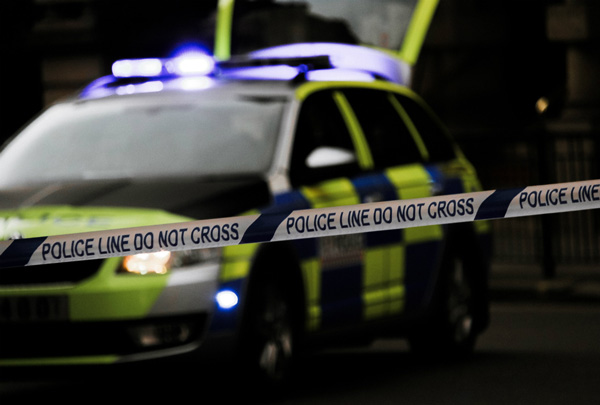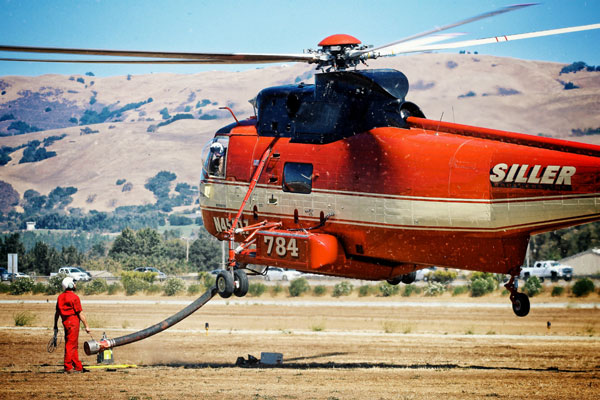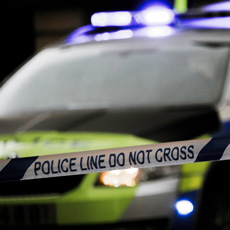
Many facilities managers prefer to maintain a behind-the-scenes role in the buildings and campuses they oversee. If people can’t see the work you do, you’re doing your job well, right?
In an emergency, however, FMs must run point because she knows the space better than anyone, and she’s able to marshal resources quickly and get people where they need to go.
This post will explore exactly what that entails.
FMs Have Several Responsibilities in an Emergency
The International Facility Management Association has an excellent guide to emergency response and business continuity that we recommend every FM read (it’s worth the $90).
A broad summary of that guide will illustrate what an FM’s various responsibilities are in an emergency:
- The FM defines everyone’s role so they know what to do when the moment arises.
- The FM defines mission-critical functions and assesses where vulnerabilities lie.
- The FM helps pull together a preparedness plan; communicates that plan to all owners, managers and occupants; and runs practice scenarios to identify breakpoints in the plan.
- The FM takes into account new circumstances, the changing needs of building occupants, and feedback from stakeholders to tweak the plan as needed.
Notice how planning and preparation account for the vast majority of that work. That’s because the best emergency response comes from thoughtful preparation, which consequently is what the majority of this post will explore.
How FMs Can Prepare Themselves for Any Emergencies
“The key to resilient building operations is planning,” says Jim Newman, principal at Linnean Solutions. Newman was writing from the perspective of natural disaster preparation, but the same can be said for any other kind of emergency (fire, terrorism, etc.) that could compromise a facility’s operations.
At minimum, he says, an emergency plan should cover four key issues:
- It should identify the mission-critical systems that must be kept running.
- It should include a list of everyone who regularly occupies the building.
- It should have a list of equipment and other property that needs to be moved out of harm’s way.
- It should include a checklist for every action the facilities team needs to take during the emergency.
Let’s unpack those first two points.
Mission-Critical Systems
“National and local codes and standards address the minimum basic requirements for emergency-power, water, HVAC, fire-protection, lighting, fuel-storage, and communication systems, Jon Perucki, a vice president at Smith Seckman Reid Inc., writes at Facilitiesnet.
“These requirements provide for the life safety and immediate needs of the facility’s staff and visitors. But they do not necessarily address a facility’s ability to provide for increased demand for services after an emergency, as well as protection of the physical plant, facility or extended operations without the support of public utilities.
“Managers can accomplish this goal by implementing an emergency sustainable-operations matrix, which enables them to analyze and determine the potential vulnerability of utility and operational systems and the cost of protecting these systems.”
His guide at Facilitiesnet is a great starting point for your own analysis. That piece then goes a little deeper into helping FMs identify what systems (operations, physical plant, communications, utilities, etc.) can run at some acceptable level of failure so they can prioritize their plans.
Building Occupants
Beyond a simple list of names of anyone you can reasonably expect will be in your facility during an emergency, you will want to have contact information — a cell phone number and a work email, probably — so you can reach them.
James McDonald, writing at iOffice, emphasizes that FMs have a duty to ensure the safety of everyone in their facilities. “Ensure that facilities asset information, information about work spaces, and information about employees is stored in a central system that you can access from the cloud in case of emergency.”
Also, he underscores the importance of routinely maintaining safety equipment such as sprinklers and alarms, and designing workspaces so that people can freely move to get to an exit.
It’s important that facilities managers communicate to occupants well ahead of time what they need to do in the event of an emergency. Make sure this information gets to everyone, too. As Anne Cosgrove at Facility Executive points out,
- 30 percent of office workers aren’t sure whom to turn to with a safety question,
- many say they aren’t aware of the location of safety equipment or what emergency plans there are,
- and many believe their workplaces are unprepared for natural disasters or power outages.
If you are struggling to find ways to communicate your emergency plans to building occupants, SearchDisasterRecovery.com has a free emergency communications planning template [Word file] that breaks down each step into actionable items that you can assign to members of your team and the company’s executives.

Regular Steps You Can Take to Improve Emergency Preparedness
Here are two additional things FMs will want to consider when putting together a comprehensive emergency preparedness plan.
Make Preparations for When You Are Away
Whether for a long holiday or because of ad hoc business reasons, sometimes you have to shut a facility down. If that’s not something your building does often, then the shutdown procedures may feel unfamiliar to you.
But overlooking security during this time invites burglars and other intruders, and that’s a different kind of emergency — the kind that could call you away from a Thanksgiving dinner, for example.
David Ward, CEO at Ward Security, has a few tips for FMs to keep in mind during such a shutdown:
- Hire temporary security for the duration of the shutdown. “Make sure the company conducts a proper risk assessment of your site, no matter how small it is, and that you receive a breakdown of its operations procedure that shows who is on site and when, plus details of its planned activity,” he writes at FM World.
- If you do hire a company to watch your facility, make sure its keyholders have access to gas, electricity and water supplies as well as other vital services. That’s important if, for example, a pipe bursts over the Christmas break.
- Install wireless intruder detection to provide an extra layer of security.
Conduct Regular Scenario-Based Exercises
The best way to prepare for a specific situation is to run through a trial exercise. This is why militaries conduct drills and basketball teams watch film of their opponents.
FM Magazine in Australia has an excellent piece from Jenny Muldoon, the head of security, emergency planning and response at the Sydney Opera House, on how she prepares for unexpected events.
“Sydney Opera House’s senior managers, EPRG [emergency planning response group] and facilities team recently conducted a real-time exercise to test our ability to recover from a fire in one of our larger theatres,” Muldoon writes. “The facilities team exceeded the expectation of the broader business.
“They examined plans to understand what services passed through the area affected and communicated this to the broader business. This enabled others in the exercise to understand the ‘knock-on’ effect with other performances. An outcome of the exercise was to establish both on- and off-site emergency cabinets. These cabinets include CAD drawings, recovery plans and contact information for a range of disciplines, including:
- hydraulics
- HVAC systems
- plant rooms
- switchboards, and
- base building plans.”

What FMs Must Do the Moment an Emergency Occurs
Because of their ages and sizes, American universities have some of the most thorough emergency response plans (at least that are available for the public to read).
The University of Maryland’s [PDF] department of facilities management has a nice example for illustrative purposes. That document puts the responsibility of evacuation, accounting for personnel, emergency communications and first-response coordination on the FM team.
Let’s take a look at two of those responsibilities, evacuation and communications, because those can be particularly difficult tasks in the moment.
Evacuation
Legal codes will set a baseline standard for access to emergency exits, but scenario-based exercises will help FMs get a feel for what an emergency evacuation looks like in real time.
When running through specific scenarios, you might be surprised at what you learn.
For example, UK security professional Lee Doddridge tells the UK Security Expo team that misguided mindsets can trip people up, even during an evacuation due to terrorism. “It is amazing when we run through [a terrorist attack] and people say that we can’t use that entry/exit because it is staff only, but then you make them realise in this life-or-death situation all of those things go out the window.”
Practice evacuation scenarios for a variety of emergencies, and you might uncover similar hang-ups you wouldn’t otherwise expect.
For more on evacuation planning, check out OSHA’s How to Plan for Workplace Emergencies and Evacuations.
Communications
“When something happens, the first thing most people do is pull out their phones,” Curtis Massey, president and CEO of Massey Disaster Planning, tells BOMA’s Jessica Bates. “If someone is panicking, if they’re alone, if they’ve forgotten what they need to be doing, there is now an app that can tell them exactly what to do and where to go that can be stored in their pocket. With the press of a button, they can access the knowledge and experience of a seasoned police officer, a firefighter or a paramedic.”
Bates points out that many property managers use email and social media such as Twitter to send out real-time updates when there is an emergency. This is particularly useful for FMs responsible for large campuses—again, universities are a useful but unfortunate example, as active shooter situations at Virginia Tech, Ohio State and elsewhere have shown how responsive emergency communications can be when students, faculty and staff all have access to mobile devices.
WiFi and cellular data networks, however, aren’t the most reliable channels for getting out mission-critical messages. Eric Toenjes, a business development manager at networking products distributor Graybar, argues at Facility Executive that a Distributed Antenna System (DAS) is one way to extend coverage.
“Wireless connectivity and a well functioning DAS not only gives a facility a competitive advantage in terms of leasing space, but is also directly connected to safety in the facility,” he writes. “In the event of an emergency, first responders and the general public should have wireless coverage anywhere in the facility — whether they are in an office, common area, mechanical room, underground tunnel, or stairwell.”
That connectivity is especially important for the initial call to 911, Toenjes says, because two-thirds of 911 calls are made from inside of a facility. Having reliable connectivity enables everyone in the building to sound the first alarm.
Still, for ongoing, synchronous communications that are vital to an evacuation or some other type of response, hand-held radios and walkie-talkies have proven themselves to be the most reliable communications tools because they don’t rely on network uptime. Make sure these are available to the facilities team — you will end up using those among yourselves and when coordinating with first responders.
Credits:
Nico BeardJeremy Yap
Chris Leipelt

